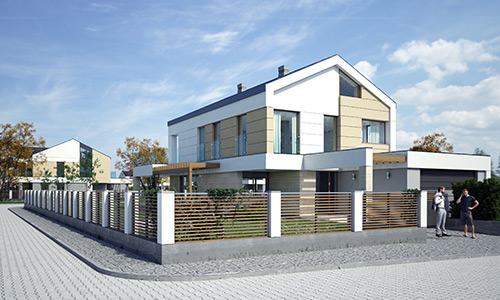
 Studies carried out in Germany and Switzerland showed, that buildings with ceramic walls, made in years 1925-1935, even though they do not have internal thermal insulation, in some cases, they consume less fuel oil than buildings with "massive" walls with thermal insulation and with "light" type walls, with high thermal insulation. It is considered, that the cause of this phenomenon is the greater ability of massive walls – homogeneous – to absorb and store thermal and solar energy.
Studies carried out in Germany and Switzerland showed, that buildings with ceramic walls, made in years 1925-1935, even though they do not have internal thermal insulation, in some cases, they consume less fuel oil than buildings with "massive" walls with thermal insulation and with "light" type walls, with high thermal insulation. It is considered, that the cause of this phenomenon is the greater ability of massive walls – homogeneous – to absorb and store thermal and solar energy.
Thermal insulation and the ability to store heat from solar radiation in the walls are mutually exclusive.
In the German literature, in order to accurately characterize the impact of solar radiation on a given type of wall, it was proposed, in addition to the heat transfer coefficient k, solar energy recovery coefficient s, the same as for windows. This coefficient depends, inter alia, on:
- degree of surface absorption of building elements (structure, colour),
- heat storage capacity of external elements (density, layer layout, Uniformity),
- moisture (steam diffusion), temperature fluctuations.
The heat storage capacity in the wall is inversely proportional to the insulation of the material. The higher the volumetric density, the greater the accumulation capacity. For the ability to store and recover heat from solar radiation, the arrangement of layers in the outer wall is also important.
Calculated s-factor values for:
- massive (Homogeneous) brick walls s = 0,8 — 0,12,
- massive walls with thermal insulation from the outside s = 0,02 — 0,025,
- light structure walls s = 0,01 — 0,015.
The given values show, that homogeneous brick walls can recover up to 10 times more energy from solar radiation than light structures or walls insulated from the outside.
On the basis of the above evidence, it can be concluded, that the northern wall, eastern and western require traditional thermal insulation, and for the southern wall (south-west and south-east) the ideal would be the way of warming with transparent insulation, but not glass. Massive homogeneous wall (for example. made of ceramic brick) should be covered from the outside with transparent fine-textured thermal insulation. It should be adjacent to the wall, but do not change its appearance, and at the same time allow free diffusion of water vapor. This type of wall would increase its ability to recover thermal energy from solar radiation, because thermal insulation would not be an obstacle to the absorption of sunlight, and on the other hand, it would be a better heat barrier. This would be a modified version of Trombe's wall.. Many scientific institutes around the world are currently working on this type of isolation.